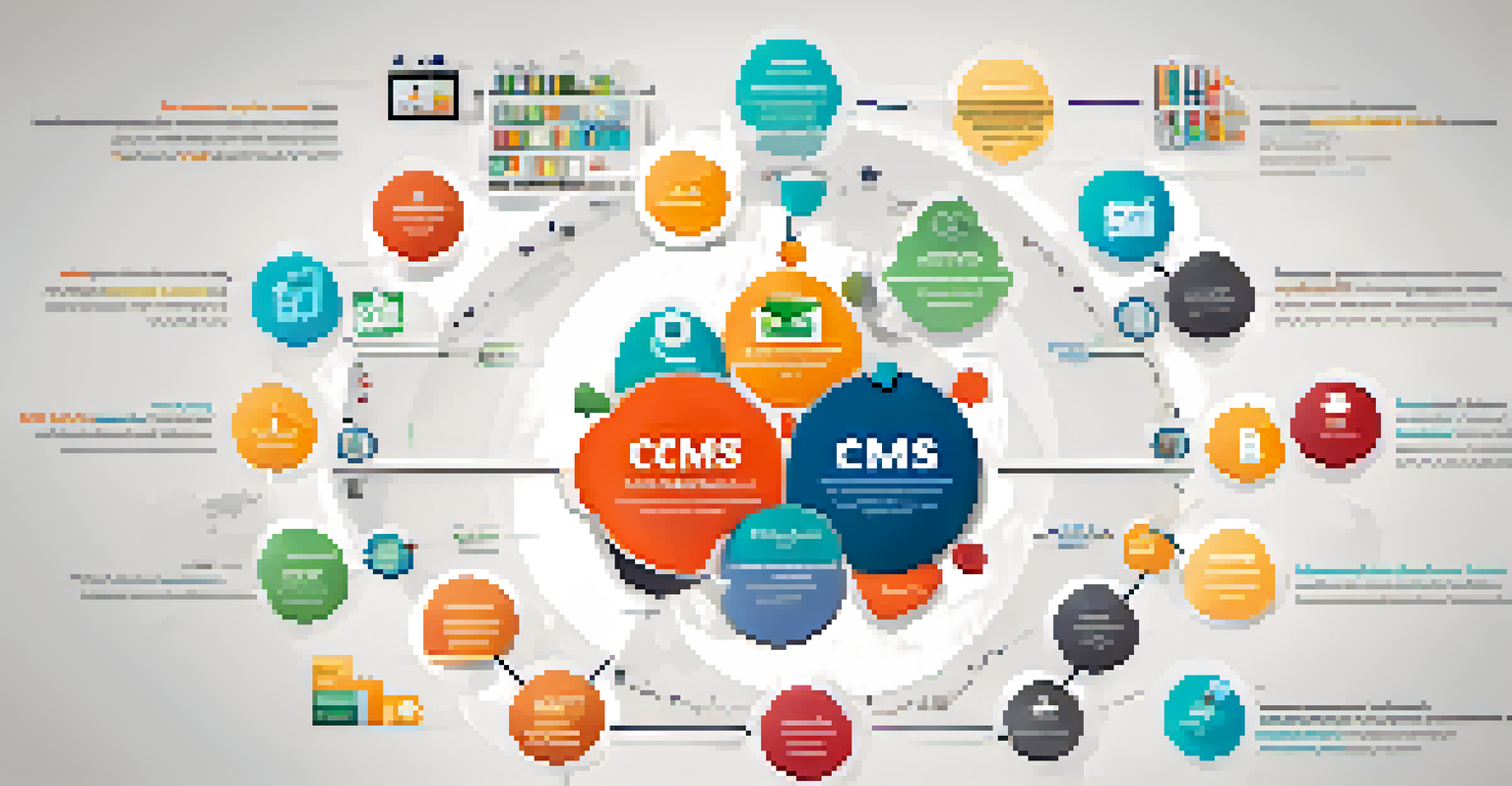Using CMS for Non-Profit Organizations: Benefits and Tips

Understanding Content Management Systems (CMS)
A Content Management System, or CMS, is a software platform that simplifies the creation, management, and modification of digital content. For non-profit organizations, using a CMS can be a game-changer, allowing them to easily update their websites without needing extensive technical skills. This means that even a small team can keep their online presence fresh and engaging.
The best way to predict the future is to create it.
Imagine a non-profit that has to rely on a third party to make even minor website changes. This can be time-consuming and costly. With a user-friendly CMS, staff or volunteers can quickly add new events, share success stories, or promote fundraising campaigns, ensuring that their message reaches supporters promptly.
In essence, a CMS empowers non-profits to take control of their digital narrative, making it easier to connect with their audience and raise awareness for their cause.
Key Benefits of Using a CMS for Non-Profits
One of the primary benefits of using a CMS is the ability to streamline operations. Non-profits often operate on tight budgets, and a CMS can help save both time and money by reducing reliance on external developers for website updates. For example, a non-profit can quickly post about an upcoming event without waiting for a web designer's schedule to align with theirs.

Another significant advantage is the capability for collaboration. Multiple team members can work on the site simultaneously, allowing for more diverse input and faster content updates. This kind of teamwork fosters a sense of ownership and investment in the organization’s mission.
Empower Non-Profits with CMS
A CMS enables non-profits to manage their digital content easily, reducing reliance on external developers and keeping their online presence fresh.
Additionally, most modern CMS platforms offer built-in tools for SEO, making it easier for non-profits to enhance their visibility online. This means more supporters can discover their mission and get involved, ultimately amplifying their impact.
Choosing the Right CMS for Your Non-Profit
Selecting the right CMS can feel overwhelming, given the myriad of options available. It's essential to consider your organization's specific needs, such as ease of use, scalability, and community support. Popular choices like WordPress, Joomla, or Drupal each have their strengths, so evaluating them based on your goals is crucial.
If you don’t like what you’re doing, you can always pick up your needle and move to another groove.
For instance, if your non-profit has a limited budget, WordPress may be the most suitable option due to its extensive range of free plugins and themes. On the other hand, if you require more complex functionalities, Drupal might be worth exploring, despite its steeper learning curve.
Ultimately, the right CMS will empower your team to focus on what matters most: advancing your mission and engaging with your community.
Integrating Fundraising Tools with Your CMS
One of the most vital aspects of a non-profit's online presence is its fundraising capabilities. Many CMS platforms offer plugins or integrations that can facilitate donations directly through your website. This seamless experience can significantly improve donor engagement and encourage more contributions.
For example, a non-profit can easily add a donation button to their site, allowing supporters to contribute at any time. This convenience often translates to higher donation rates, as potential donors appreciate the ability to give quickly without navigating away from the site.
Enhance Fundraising Through Tools
Integrating fundraising tools within a CMS streamlines the donation process, encouraging more contributions from supporters.
Integrating fundraising tools not only streamlines the donation process but also helps organizations track their fundraising efforts and understand donor behavior better, which can inform future campaigns.
Enhancing Communication with Your Audience
A CMS can significantly enhance how non-profits communicate with their supporters. With features like blogs, newsletters, and social media integration, organizations can share updates, stories, and calls to action more effectively. This consistent communication keeps audiences engaged and informed about the organization’s efforts and successes.
For instance, by regularly updating a blog with success stories, a non-profit can create a narrative that resonates with its audience, highlighting the impact of donations and volunteer efforts. This storytelling approach can foster a deeper emotional connection with supporters.
Moreover, using a CMS allows for the easy segmentation of audiences, enabling targeted messaging that speaks directly to different groups, like volunteers, donors, or event attendees.
Maintaining Security and Compliance with a CMS
Security is a crucial consideration for non-profits, especially when handling sensitive data from donors and volunteers. A reputable CMS typically includes security features such as regular updates, data encryption, and user access controls, helping non-profits safeguard their information.
In addition to security, compliance with regulations like GDPR and PCI-DSS is essential for non-profits that collect data online. A good CMS can help ensure that your organization is following best practices for data protection, minimizing the risk of legal issues.
Maintain Security and Compliance
A reputable CMS includes security features and helps ensure compliance with data protection regulations, building trust with donors.
By prioritizing security and compliance, non-profits can build trust with their audience, assuring them that their information is safe and handled responsibly.
Best Practices for Managing Your Non-Profit CMS
Once you've implemented a CMS, establishing best practices for content management is vital. Regularly updating content, maintaining a consistent brand voice, and ensuring easy navigation will enhance the user experience and keep your audience engaged. Make it a habit to audit your site periodically to identify any outdated information.
Training team members on how to use the CMS effectively can also improve efficiency. Consider hosting workshops or creating guides that simplify the learning process, ensuring everyone feels comfortable managing content.

Lastly, fostering a culture of collaboration where team members can share ideas and feedback will lead to a more dynamic and responsive online presence, ultimately benefiting your organization’s mission.